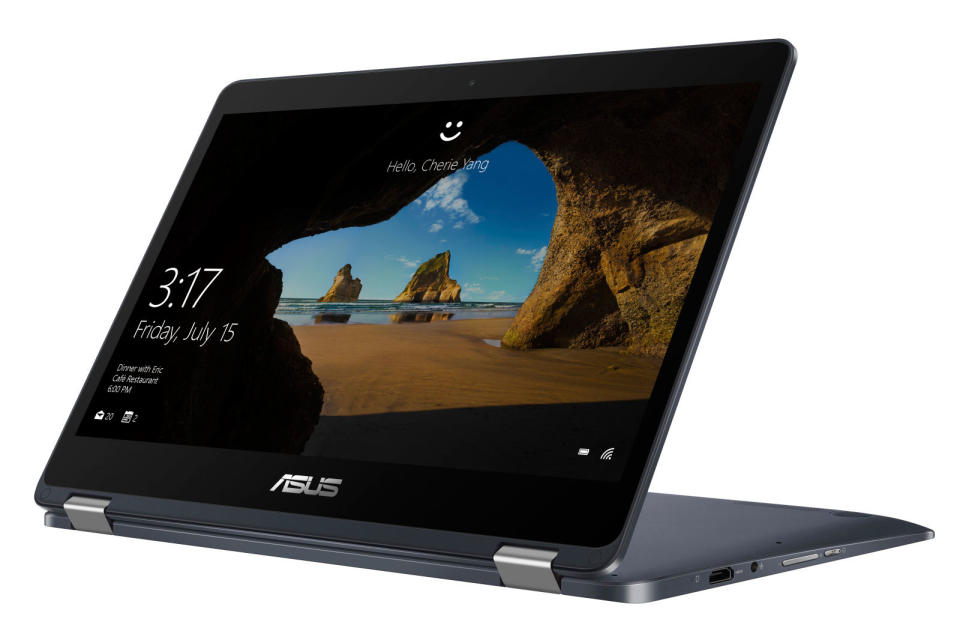HP and ASUS unveil Snapdragon-powered laptops
The highlight? 20-hour batteries.
Since teasing us with a preview of what Windows on Snapdragon will look like at Computex this year, Qualcomm and its partners are ready to reveal actual devices. Today, at Qualcomm's second annual tech summit, we saw the HP Envy x2 and the ASUS NovaGo -- two of the "Always Connected PCs" that Microsoft has talked about since last year. In fact, the ASUS is calling the NovaGo the first Gigabit LTE laptop, since it uses the Snapdragon chipset that enables those speeds.
Both laptops use the Snapdragon 835 chipset which you'll find on this year's premium smartphones like the Pixel 2, Galaxy Note 8, LG V30, Xperia XZ Premium and Razer Phone. The chip comes with Qualcomm's Snapdragon X16 modem which supports gigabit LTE where available. Although Windows on Snapdragon PCs are meant to support eSIM for easier switching between carriers while traveling, the models announced today will still have a standard nano SIM card slot. It's currently unclear when the eSIM built into the NovaGo's wireless modem will be activated for use, but at least it has one -- the HP laptop will rely solely on a traditional nano SIM.
At just 1.54 pounds, the HP Envy x2, which is the company's latest Surface clone, is lighter even than the 12-inch MacBook (2016), which weighs a mere 2 pounds. The Envy has a similarly sized 12-inch display, though its 1,920 x 1,280 resolution isn't as sharp as the MacBook, and to be fair the Envy is more of a tablet convertible while the Macbook is a more traditional laptop. Still, it's pretty thin and light. We already had a chance to check the Envy x2 out -- check out our hands-on here.
Meanwhile, the ASUS NovaGo weighs 1.39 kg (or 3.06 pounds) and packs a slightly larger 13.3-inch full HD LTPS touchscreen with ASUS Pen support (1024-level pressure). At our hands-on here in Hawaii, the NovaGo's display was dim in bright light, making it hard to read. Indoors, though, it was clear and delivered rich colors, which isn't a big surprise since the panel can reproduce 100 percent of the sRGB color gamut. I also found the ASUS Pen responsive when I was circling keywords or underlining random words on a PowerPoint slide.
Both the ASUS and HP convertibles offer up to 8GB of RAM and 256GB of storage, although the NovaGo uses UFS 2.0 that should allow for faster memory access and lower power consumption. I wasn't able to really test this out during my hands-on, but the machine did respond quickly to my frenzied exploration of the Windows 10 S interface. The Snapdragon 835 processor here slowed down when I tried things like pulling up the WiFi network finder or load system information, though the first lag could be due to the messy networks on the showfloor. The NovaGo also sports a full HDMI socket and a microSD slot, which makes it more useful for professional travelers who need to say, transfer images or conduct presentations on the go.
The main thing to note here is that these are two Snapdragon-powered PCs that can run full Windows 10 while providing smartphone-like connectivity to gigabit LTE networks. Both devices will ship with Windows 10S, but ASUS and HP are offering free upgrades to Windows 10 Pro before Sept. 30, 2018.
The HP Envy x2 will be available in spring next year, while no timeframe has been shared for the ASUS NovaGo yet. ASUS will offer the device for $599 ($799 for 8GB of RAM and 256GB of storage) first in the US, UK, Italy, France, Germany, Mainland China and Taiwan, and is working with T-Mobile, Sprint and Verizon to offer the NovaGo. We'll be checking out the new ASUS laptop later today, so stay tuned for our hands-on impressions to find out if this is a device worth your time.










































